
* The Boeing 737 began life as a "short" version of the Boeing 727, powered by twin Pratt & Whitney JT8D turbofans. Sales were disappointing at first, but Boeing persevered, and by the late 1970s, the 737 was a real money-maker for the company. Boeing officials then decided to capitalize on the success of the first generation of 737s, moving on to a second generation in the 1980s, powered by much more efficient CFM56-3 turbofans.
* In the 1950s the Boeing company, then of Seattle, helped establish the jetliner business with its four-jet "707" airliner, which was followed in the early 1960s by the three-jet "727" airliner. Boeing officials then had to consider what to do next: develop a "stretch" version of the 707, or get into the "short-haul" jetliner market. The Douglas company was developing the "DC-9" and the British Aircraft Corporation was developing the "BAC 111" for the short-haul market; should Boeing compete?
The DC-9 and BAC 111 were obtaining big orders from the airlines, and so the decision was that Boeing should also get into the short-haul market. Work on what would emerge as the "Boeing 737" began in November 1964. The initial specification was for a twinjet 85-passenger airliner with a range of 925 kilometers (575 miles) and excellent short-field capability, to permit operations from smaller airports.
Early concepts envisioned twin engines mounted on the rear fuselage and a tee tail, the same configuration used by the DC-9 and BAC 111, the rear-mounted engine configuration being derived from the groundbreaking Sud-Aviation Caravelle. This early concept amounted in effect to a "short" 727 with twin engines. However, there were concerns that the tee-tail configuration was prone to dangerous stalls under certain conditions, and the 737 was to have a wider fuselage than the DC-9, which greatly complicated airflow to fuselage-mounted engines.
As a result the design team, led by Joe Sutter and Jack Steiner, started tinkering with other engine layouts. They found that moving the engines to under the wing was a better configuration, then deciding that it would be best if the engines were directly mounted to the wing instead of underslung on pylons. The engine mounting scheme was borrowed from that used for the outboard engine on each wing of the Boeing B-47 bomber. Directly mounting the engines to the wing saved weight and permitted shorter landing gear, which saved weight in turn. It caused no real penalty in drag, and also reduced the tendency of the wings to flex upward, permitting a lighter wing. Considerable work was put on wing design, though attempts to reduce the weight of the wing turned out to be a dead end.
The end result was an aircraft that was still 700 kilograms (1,550 pounds) lighter than a comparable tee-tail configuration, permitting carriage of six more passengers. Although the baseline design envisioned 85 passengers, at the request of the German airline Lufthansa, the cabin was stretched to accommodate up to 103 passengers. Lufthansa became the launch customer for the "737-100" variant in February 1965, with an order for 22 jetliners. United Airlines followed with a request for still more capacity, up to 130 seats, with Boeing responding with the 130-passenger "737-200" variant, with the length increased from 28.65 meters (94 feet) to 30.48 meters (100 feet) and empty weight increased by about 4%.
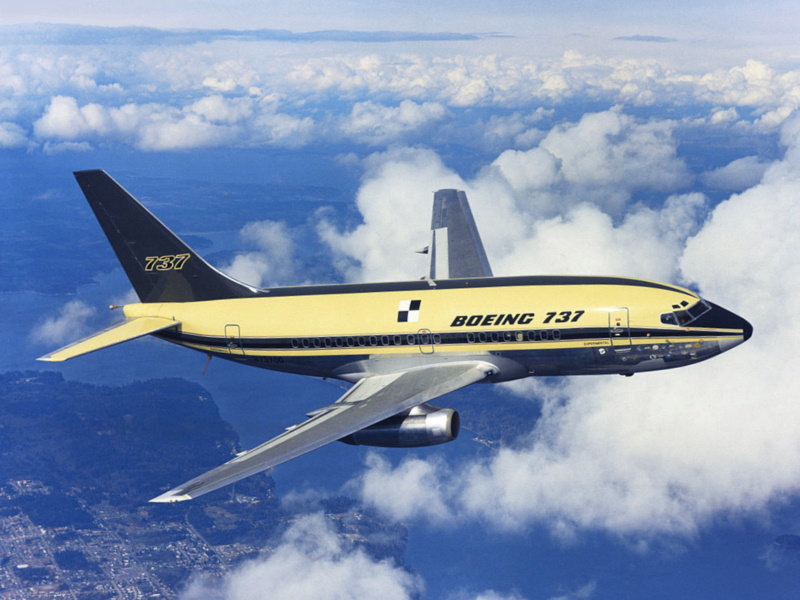
Initial flight of the first of six 737 prototypes was on 9 April 1967, aircrew consisting of Brien Wygle and Lew Wallick. There were a number of significant problems with the prototypes, primarily that the design was too "draggy" and that the clamshell engine thrust reversers didn't work right. Aerodynamic tweaks were applied to the airframe to solve the drag problem; it turned out that the thrust reversers were too close to the wing, so the exhaust pipes were extended by about a meter (40 inches) and the reversers themselves were modified, results being much more satisfactory. The first 737-100 was certificated and delivered to Lufthansa in December 1967, going into service in February 1968. The 737-200 was also certificated in December 1967, with initial service by United in April 1968.
The Lufthansa machines were specifically designated "737-130", incidentally, different buyers often being given their own subvariant designation codes. These subvariant codes are ignored in this document for the sake of simplicity; the Lufthansa machines were just a flavor of the 737-100.
BACK_TO_TOP* The 737-100 did not prove successful, with a mere 31 sold, Lufthansa being the only major buyer, the bigger 737-200 effectively becoming the standard offering in the early days of the 737.
The 737-200 was a twin-jet aircraft with a low wing and all-swept flight surfaces, made largely of aircraft aluminum alloys, with considerable use of aluminum honeycomb. The two-spar wing had a 6-degree dihedral at the wingroot, with the wing canted up further outboard of each engine, and an incidence of 1 degree. The wing sweepback was moderate, 25 degrees instead of the 32 degrees of the 727, in order to provide good take-off and landing performance. For the same reason, the wings had a "busy" arrangement of flight control surfaces, with each wing featuring:
The arrangement of the spoilers was somewhat confusing: there was one spoiler inboard of the engine and three outboard, with the ground spoilers being the inboard and outboard spoilers, and the flight spoilers being the two in between. Flight surfaces were hydraulically actuated, while the engine inlets and wing leading edge were de-iced with engine bleed air. The tail surfaces weren't de-iced, incidentally, it wasn't seen as a problem. The cockpit windscreen was apparently de-iced by engine bleed air, though since sources are unclear on this matter, it might have been done by electrical heating.
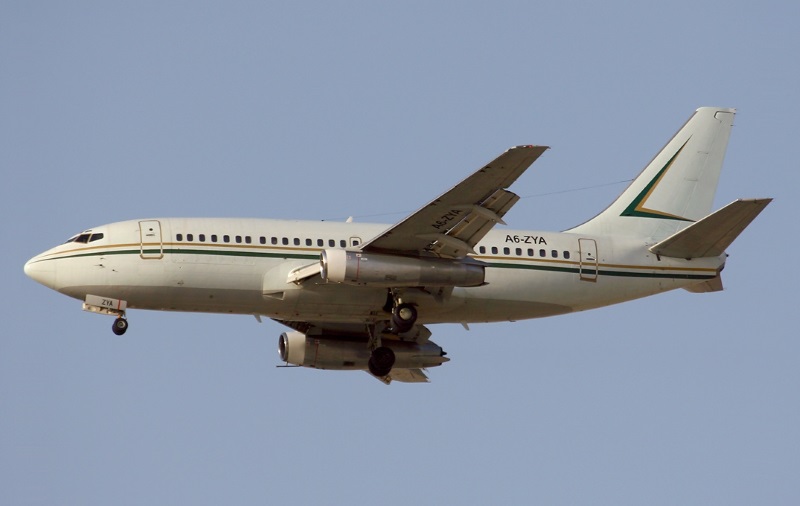
Initially, the engines were Pratt & Whitney JT8D-9 turbofans, with a thrust of 64.5 kN (6,575 kgp / 14,500 lbf) each and, as mentioned, clamshell thrust reversers. There was an AiResearch auxiliary power unit (APU) turbine in the tail for ground and emergency power, as well as engine starting. Fuel storage was in the wings and the wing center section, the total being 17,968 liters (4,747 US gallons). All landing gear assemblies had twin wheels, the steerable nose gear retracting forward and the main gear pivoting from the inner wings into the fuselage; as noted, the main gear did not have door covers. The landing gear retracted hydraulically, automatically deploying in case of hydraulic system failure.
___________________________________________________________________
BOEING 737-200:
___________________________________________________________________
wingspan:
28.35 meters (93 feet)
wing area:
91.05 sq_meters (980 sq_feet)
length:
30.5 meters (100 feet)
height:
11.28 meters (37 feet)
empty weight:
26,870 kilograms (59,235 pounds)
MTO weight:
51,480 kilograms (113,500 pounds)
max speed at altitude:
945 KPH (585 MPH / 510 KT)
cruise altitude:
9,145 meters (30,000 feet)
range:
3,555 kilometers (2,210 MI / 1,920 NMI)
___________________________________________________________________
Cockpit avionics were as standard for jetliners of the era, including communications and navigation systems as well as a weather radar in the nose; avionics fit tended to vary between users. There were, as mentioned, two flight crew -- three early on -- not counting cabin attendants. Seating was six-across, with a typical passenger configuration featuring 14 first-class seats in a forward section and 88 tourist-class seats in the rear for a total of 102 seats; 130 seats was an all-tourist "cattle car" configuration, a more reasonable all-tourist configuration being 115 seats.
There was a galley and toilet fore and aft -- or in some layouts, both galleys forward and both toilets aft -- plus baggage holds under the floor fore and aft of the wing. There was a passenger boarding door on the left forward side of the fuselage, with a second passenger door featuring a two-section fold-down airstair at the left rear of the fuselage; there were service doors on the right side of the fuselage mirroring the passenger doors, and an emergency exit above each wing.
A "combi" (combination cargo-passenger) variant, the "737-200C", with a large upward-opening cargo door on the left forward fuselage, was introduced in late 1968. The cargo door was 3.4 meters wide and 2.21 meters tall (130 x 87 inches), this variant also featuring a reinforced floor with a roller system. It could carry a maximum load of 15,300 kilograms (33,750 pounds). A similar "737-200QC" combi variant was introduced with a "quick change" interior, featuring palletized seats to permit rapid alteration of configuration. There were military variants of the 737-200, discussed later, as well as some VIP / executive jet configurations.
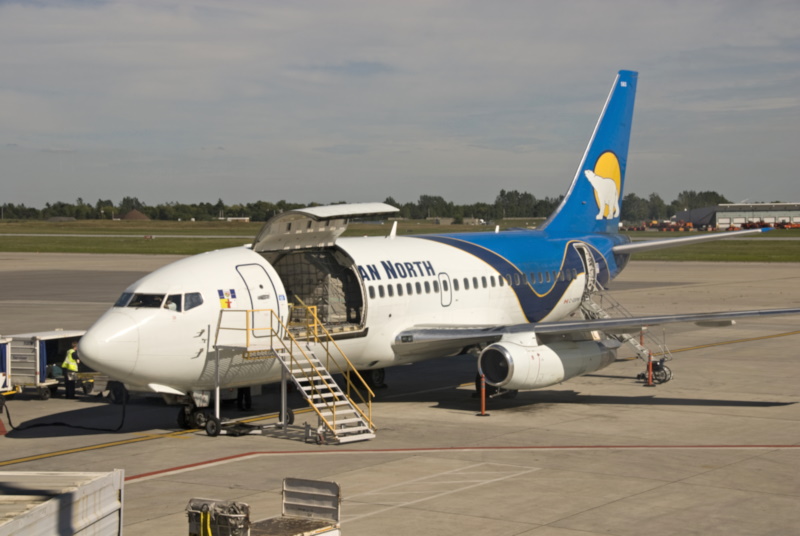
To support operations off of rough fields, a modification kit was introduced in 1969, featuring a deflector plate on the nose gear wheels to reduce the impact of debris on the aircraft; a blower pipe under each engine inlet to prevent debris from being sucked into the engines; fiberglass reinforcement for the flaps; and other protection for belly surfaces.
BACK_TO_TOP* It would be nice to say the 737 was a roaring success from the outset, but it wasn't. The technical glitches seen in prototype evaluation persisted into service, leading to more aerodynamic tweaks to the airframe and new thrust reversers. These refinements were flowed into production, with the first 134 production machines also updated to that spec. Getting manufacturing processes up to speed also proved more troublesome than expected, since the expected level of commonality with the familiar 727 steadily declined through development. One problem was that the 737 flew more short-hop trips than its 727 ancestor, which meant more stress per flight-hour on the 737 than on the 727 -- an airframe gets more stress in take-offs and landings than in cruise flight, with pressurization-depressurization cycles contributing to the stress. The enhanced stress meant a stronger wing and slightly thicker fuselage skinning than the 727.
Yet another difficulty was essentially political, the US airline pilot's union judging that the 737 needed a crew of three, putting it at a disadvantage to the DC-9, which could "legally" be flown with two crew. The ruling would later be rescinded, but it was an obstacle early on. The problems with the 737 helped wrongfoot it against the competition, with the DC-9 handily outselling it at the outset.
In the late 1960s, Boeing was working on the development of the 747 "jumbo jet", and in the face of a market downturn from 1969, finding the resources to keep the 737 program going was problematic. Boeing had a choice to either give up on the 737 or push on with it. There was a temptation to give up; Boeing officials even contemplated selling the 737 design to a group of Japanese aircraft manufacturers to bring in money needed to get the 747 out the door. The sale was conceivable because the tooling for the 737 had been designed to be transportable, with the original production line at Boeing Field in Seattle moved to the Renton site north of Seattle in late 1970. The deal didn't fly, and nobody wanted to talk about it for years.
Boeing chose instead to persist with the 737, targeting international sales. The company was aided by the cancellation of its 2707 supersonic transport program in 1971 -- which not only freed up resources, but cut short an exercise that in hindsight would have been a business disaster -- and by a decision to momentarily scale back work on the 747. Boeing introduced the "737 Advanced" variant of the 737-200, the first performing its initial flight on 15 April 1971, this model featuring improved JT8D-9A engines, various airframe tweaks, and a comprehensively redesigned interior to make better use of space.
More powerful JT8D-15 and JT8D-17 powerplants, with 69 kN (7,030 kgp / 15,500 lbf) and 71.2 kN (7,260 kgp / 16,000 lbf) thrust respectively, were then offered as options for clients needing to fly in "hot and high" conditions or with greater loads. Boeing also introduced engine "hushkits" or "Quiet Nacelles" in 1973 to turn down the volume on the noisy JT8D engines, flowing the hushkits into production and offering them for retrofit. Flight system improvements were introduced as well, most significantly an "autothrottle" system.
Although 737 sales hit a low of 14 aircraft in 1972, barely enough to keep the production line ticking over, sales began to rise after that, with the 737 gradually outpacing the DC-9. In 1978, a decade after the first flight of the 737, sales finally boomed, due to a rebounding airliner market and US government relaxation of the rules on regional airlines. By 1980, the 737-200 was one of Boeing's cash cows, and becoming predominant in the short-haul jetliner market.
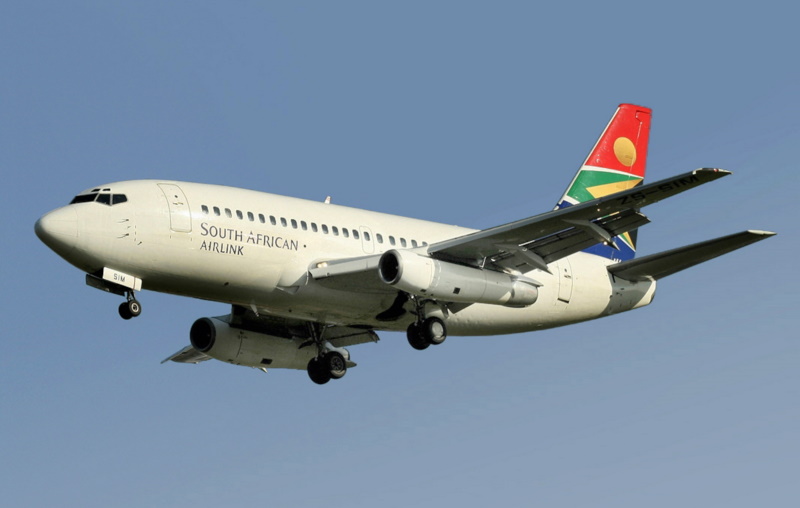
* The 737-200 remained in production to August 1988, with 1,114 delivered, including 104 cargo machines and, as discussed later, 22 specialized military variants. There have been conversions of 737-200 airliners to cargo configurations; how many 737-200s of any configuration remain in service is unclear, since their relatively inefficient JT8D engines and high fuel prices make them uneconomical to operate in most roles. Apparently some 737-200s with JT8D-15 or JT8D-17 engines were "de-engined" to JT8D-9A engines when they were re-assigned to jobs in which better fuel economy was more important than additional engine power.
One feature of 737 variants of later generations was "winglets", fins on the wingtips intended to reduce wingtip "vortex drag" and increase fuel economy. "Mini-winglets" were actually developed by a third-party organization for the 737-200, though it's unclear if anyone ever bought off on them.
BACK_TO_TOP* In the late 1970s, as the 737's popularity became entirely obvious, Boeing officials began to consider a "stretched" version of the 737 with more passenger capacity. That led to an issue, in that the 737-200's JT8D powerplants didn't generate enough thrust to adequately power a much larger airframe. They were also "low-bypass" engines with small fans, being increasingly seen as noisy, dirty, and not all that efficient. Pratt & Whitney did develop a much improved "JT8D-200" series of engines for the DC-9 family, but Boeing didn't see it as the right growth path.
In 1980, Boeing committed to development of the stretched "737-300", choosing the modern "CFM56" turbofan from CFM International, a collaboration of General Electric (GE) of the US and SNECMA of France. The CFM56 was a state-of-the-art "high bypass" engine, clean, quiet, and fuel-efficient. It had been developed during the 1970s, with an eye initially towards re-engining older airliners, but didn't start getting sales until 1979. As far as Boeing was concerned, the CFM56 was in the right place at the right time, and staked the future of the 737 on it.
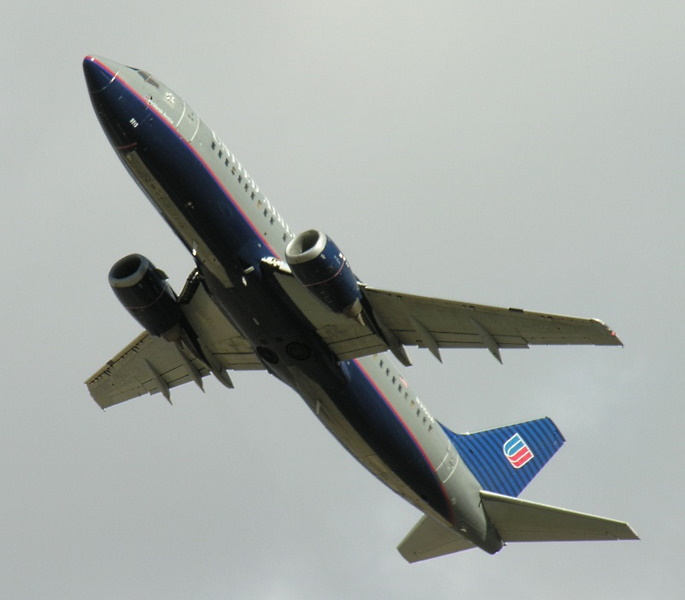
The 737-300 was stretched 2.64 meters by inserting plugs in the fuselage fore and aft, permitting a maximum of 149 seats in a "cattle car" configuration, as well as a larger cargo hold. The wings and landing gear were reinforced to handle heavier take-off weights, with the wingspan extended by 56 centimeters (22 inches) and fitted with improved slats plus another ground spoiler. The tailplane span was also increased, and a bigger forward tailfin fillet was added to improve engine-out handling.
The 737-300 was powered by the CFM56-3-series turbofan, which had a substantially larger diameter than the JT8D, requiring a rethink of the engine arrangement, the CFM56 being mounted on a pylon extending it forward of the wing. The rear fuselage stretch, incidentally, was proportionately greater than the forward fuselage stretch to counteract the shift of center of gravity forward due to the new engine arrangement. There was still concern over the engine nacelles clearing runway lights, and so the CFM56-3 was a special version just for the 737-300, with accessory modules moved to the lower sides of the engine from the bottom. That gave the engine nacelles a somewhat bulged or flattened appearance when seen from the front; to general surprise, the new CFM 56 nacelles turned out to be aerodynamically cleaner than the old JT8D nacelles. The length of the nose gear leg was also increased to ensure clearance.
A small fin or "strake" was added to the upper inboard side of each engine nacelle, to generate a vortex to ensure proper airflow over the wing. Some claim less plausibly it kept the engine cowling closed if it wasn't latched properly; possibly it did both. Incidentally, there was some thought of offering alternative powerplant options for customers who wanted them, but it never happened. The cockpit could be fitted with a traditional "steam plant" instrument layout, or a modern "electronic flight instrumentation system (EFIS)" with a partial "glass cockpit", as per customer request.
The green light for production of the 737-300 was given in 1981, with carriers including US Air and Southwest Airlines as launch customers. The initial flight of the first 737-300 was on 24 February 1984, pilot Jim McRoberts at the controls, with deliveries in the fall of 1984 and introduction to operational service before the year was out.
The initial 737 variant featured CFM56-3B-1 turbofans rated at 89 kN (9,070 kgp / 20,000 lbf) thrust each; uprated CFM56-3B-2 engines were available from 1988 that provided 97.9 kN (9,975 kgp / 22,000 lbf) thrust each. Although the door layout was the same as the 737-200, the (optional) airstair was on the front left door, not the rear left door. The 149-seat cattle car configuration was extreme, a more reasonable all-tourist layout being 141 seats; a typical two-class configuration was eight first-class seats forward and 120 tourist-class seats in the rear. Boeing offered additional fuel tanks as an option, as well as a VIP / executive variant, typically with luxury accommodations for 30 passengers.
___________________________________________________________________
BOEING 737-300:
___________________________________________________________________
wingspan:
28.88 meters (94 feet 9 inches)
wing area:
105.5 sq_meters (1,350 sq_feet)
length:
33.4 meters (109 feet 7 inches)
height:
11.13 meters (36 feet 6 inches)
empty weight:
32,880 kilograms (72,490 pounds)
MTO weight:
56,470 kilograms (124,500 pounds)
MTO weight, long-range option:
63,275 kilograms (139,500 pounds)
max speed at altitude:
1,015 KPH (630 MPH / 550 KT)
cruise altitude:
10,200 meters (33,500 feet)
range, full load:
2,705 kilometers (1,680 MI / 1,460 NMI)
range, full load, long-range option:
4,135 kilometers (2,570 MI / 2,235 NMI)
___________________________________________________________________
* With the more powerful CFM56 available, Boeing had plenty of room for growth with the 737, and announced a further stretched variant, the "737-400", in 1986. Initial flight was on 19 February 1988, with first deliveries, to Piedmont Airlines, before the end of that year.
The 737-400 featured a 3.05-meter (10-foot) fuselage stretch, extending its length to 36.45 meters (119 feet 7 inches). Maximum capacity was 168 seats, though a more typical arrangement was ten first class seats, in rows of four, and 136 tourist seats, in rows of six. There were two emergency exits above each wing instead of one. Basic powerplants were CFM56-3B-2 turbofans with 97.9 kN (9,975 kgp / 22,000 lbf) thrust each. The wings and landing gear were reinforced to handle heavier take-off weights, and a bumper was installed under the tail. Boeing then introduced options for the 737-400 with higher maximum take-off weight -- featuring airframe reinforcement, more fuel capacity, and CFM56-3C-1 engines with 104.5 kN (10,670 kgp / 23,500 lbf) thrust each.
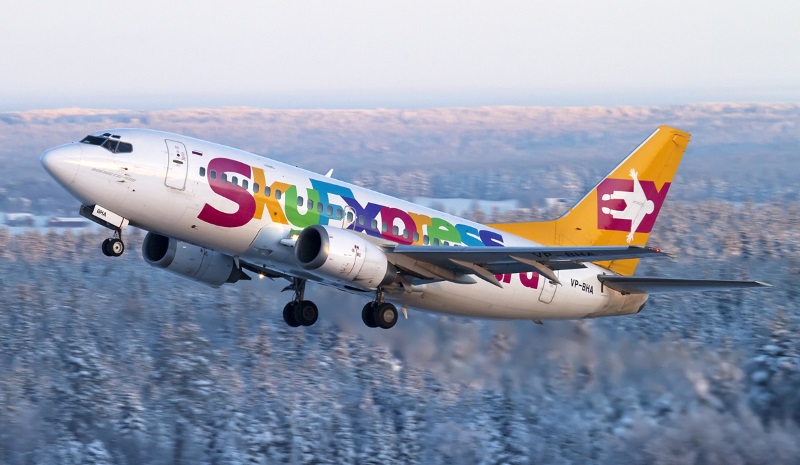
* In the meantime, production of the old 737-200 was clearly nearing its end, and so in 1987 Boeing officials decided to build a replacement based on the 737-300, this new aircraft being originally referred to as the "1000 Series", with that designation then changing to "737-500". It was the same length as the 737-200 -- or nearly so, the 737-500 being 50 centimeters (20 inches) longer, giving a length of 31 meters (101 feet 8 inches). Maximum capacity was 138, though eight first-class and 100 tourist seats were more typical. It was powered by CFM56-3B-1 engines derated to 82.3 kN (8,390 kgp / 18,500 lbf) or 89 kN (9,070 kgp / 20,000 lbf) thrust each. Initial flight of the 737-500 was on 30 June 1989, with first deliveries to customers in 1990. A year later, Boeing delivered a 737-500 to Lufthansa, the 737's original launch customer, that machine being the 2,000th 737 built.
None of the second-generation 737s -- sometimes referred to as the "Classic" 737s, disregarding the 737-100 and 737-200 -- were built new as air freighters, though there were conversions of 737-300 and 737-400 machines to freighter configurations later. They featured a large, upward-hinged cargo door on the front left fuselage, a reinforced cargo door, cargo-handling gear, window plugs, modified lighting and other systems, plus a few seats for passengers / cargo handlers.
In 2017 the Coulson Group, an aerial fire-fighting company out of British Columbia, bought six 737-300s from Southwest Airlines, to be kitted up as air tankers, using a tanker system the company originally developed for the Lockheed C-130, with a retardant capacity of 15,160 liters (4,000 US gallons). These "Fireliners" still retained 63 passenger seats and a galley, allowing them to transport fire-fighting teams, as well as put out fires. They went into service from the summer of 2018.
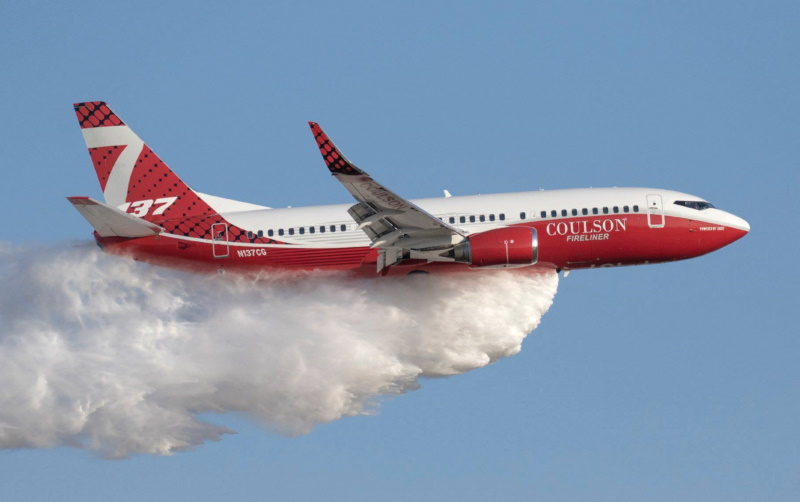
After the turn of the century, many of the second-generation machines, particularly the popular 737-300, were refitted with winglets to improve fuel economy. However, due to rising fuel prices, even the CFM56-3-powered 737 variants still prove uneconomical to operate, and have been generally retired. There hasn't been much interest in re-engining Classic 737s with improved engines, possibly because most of them are "over the hill" on airframe life anyway. Jetliners are expensive items of capital equipment, and they are flown on accordingly heavy flight schedules, leading to a lot of wear and tear.
BACK_TO_TOP